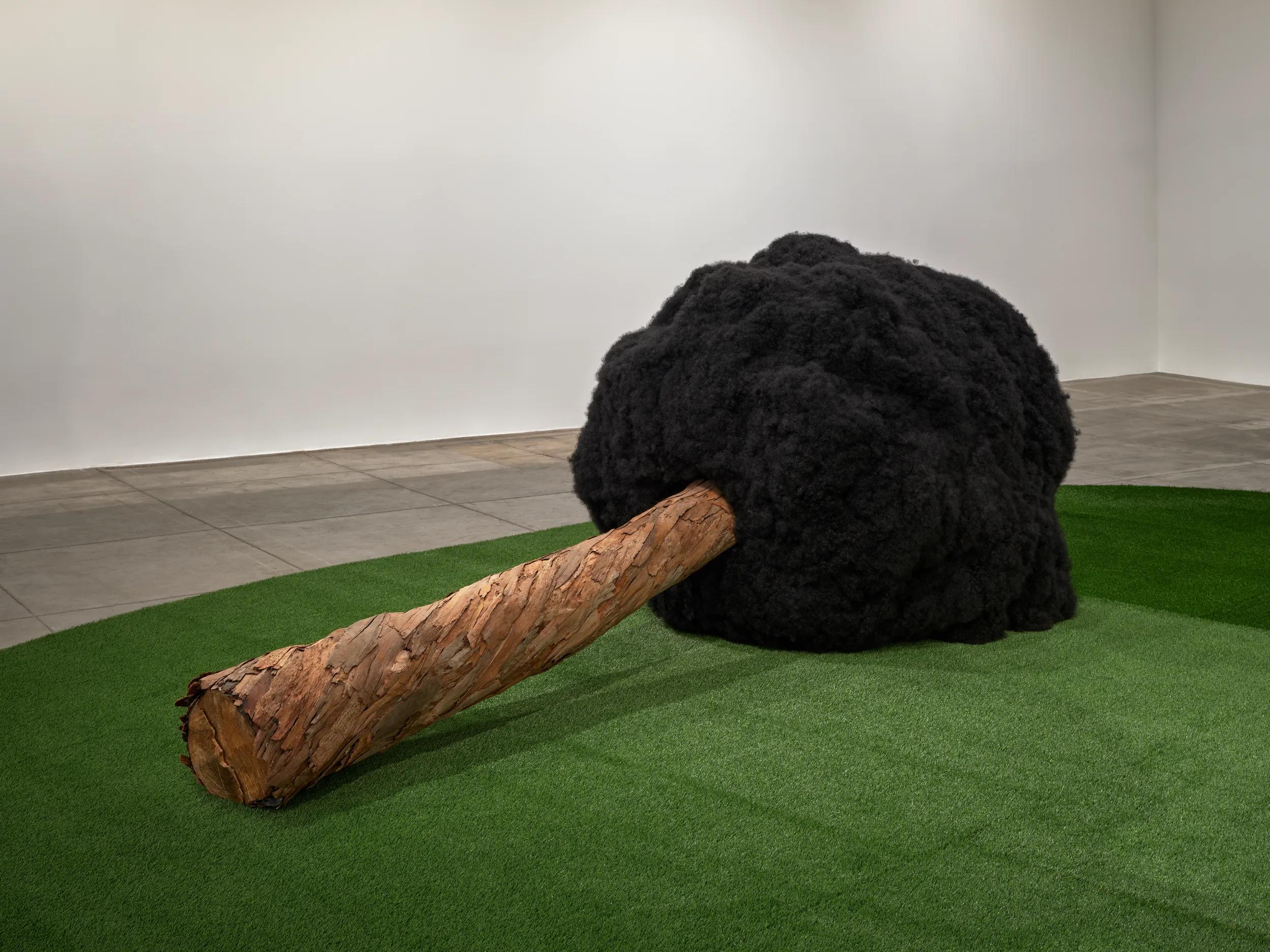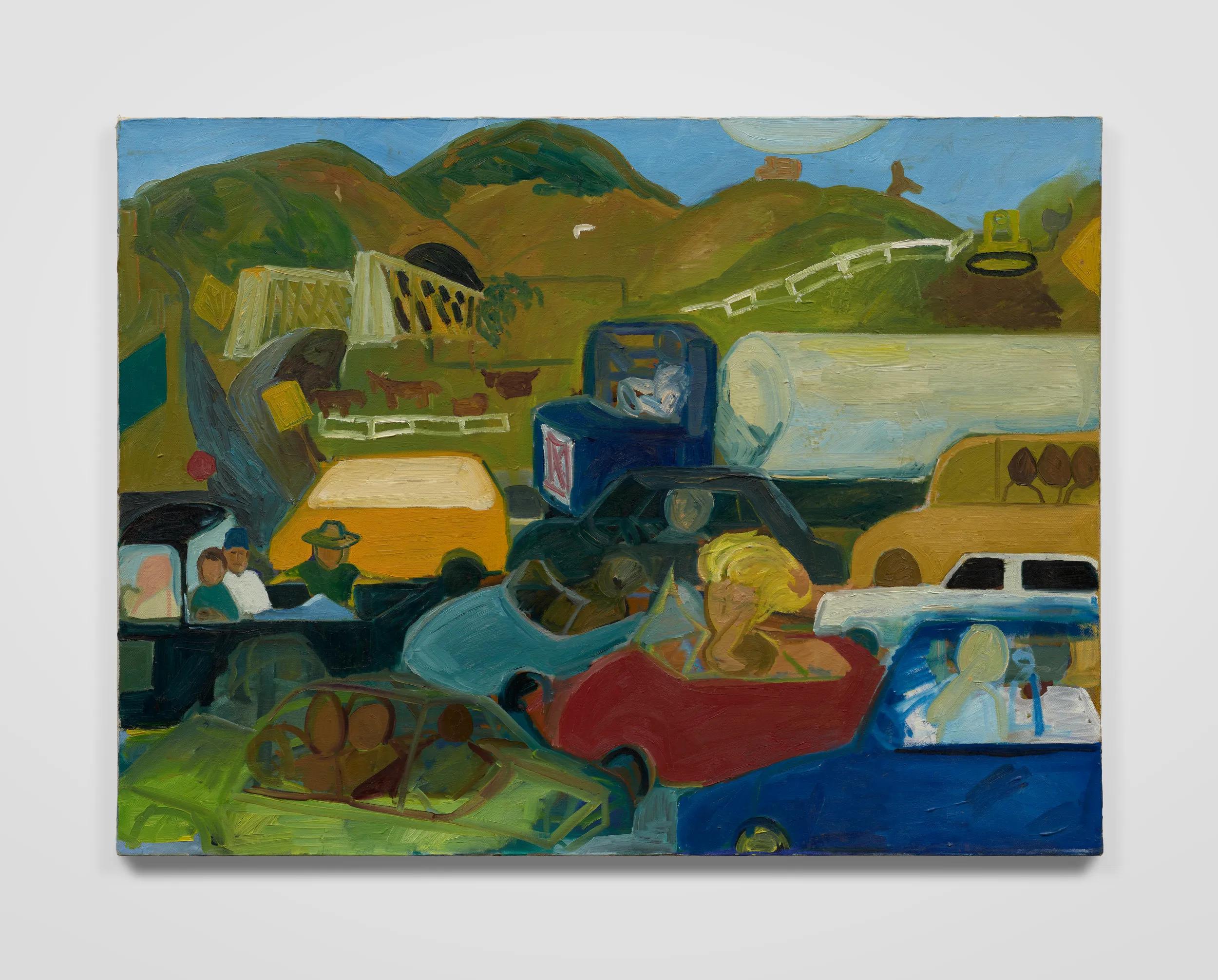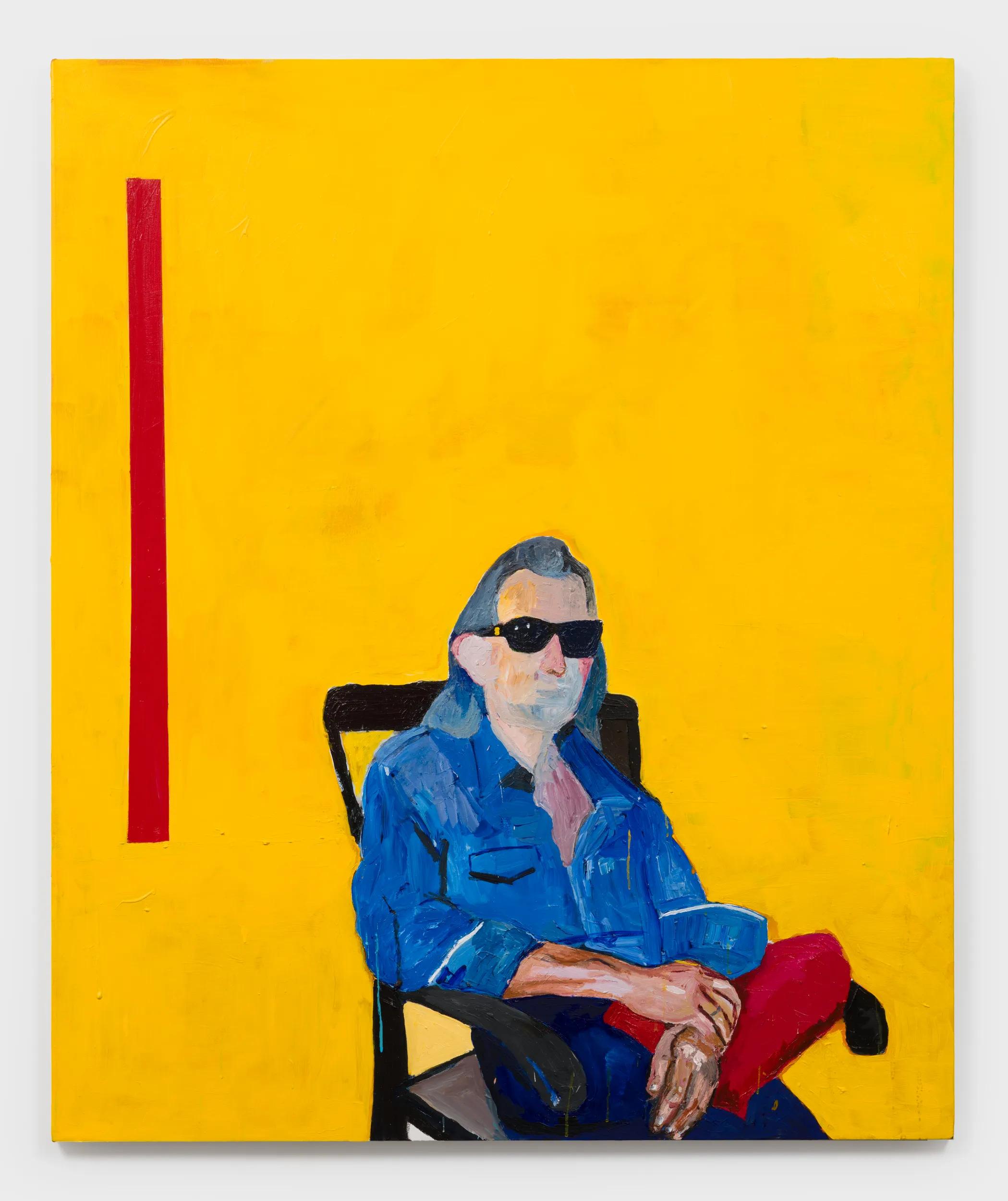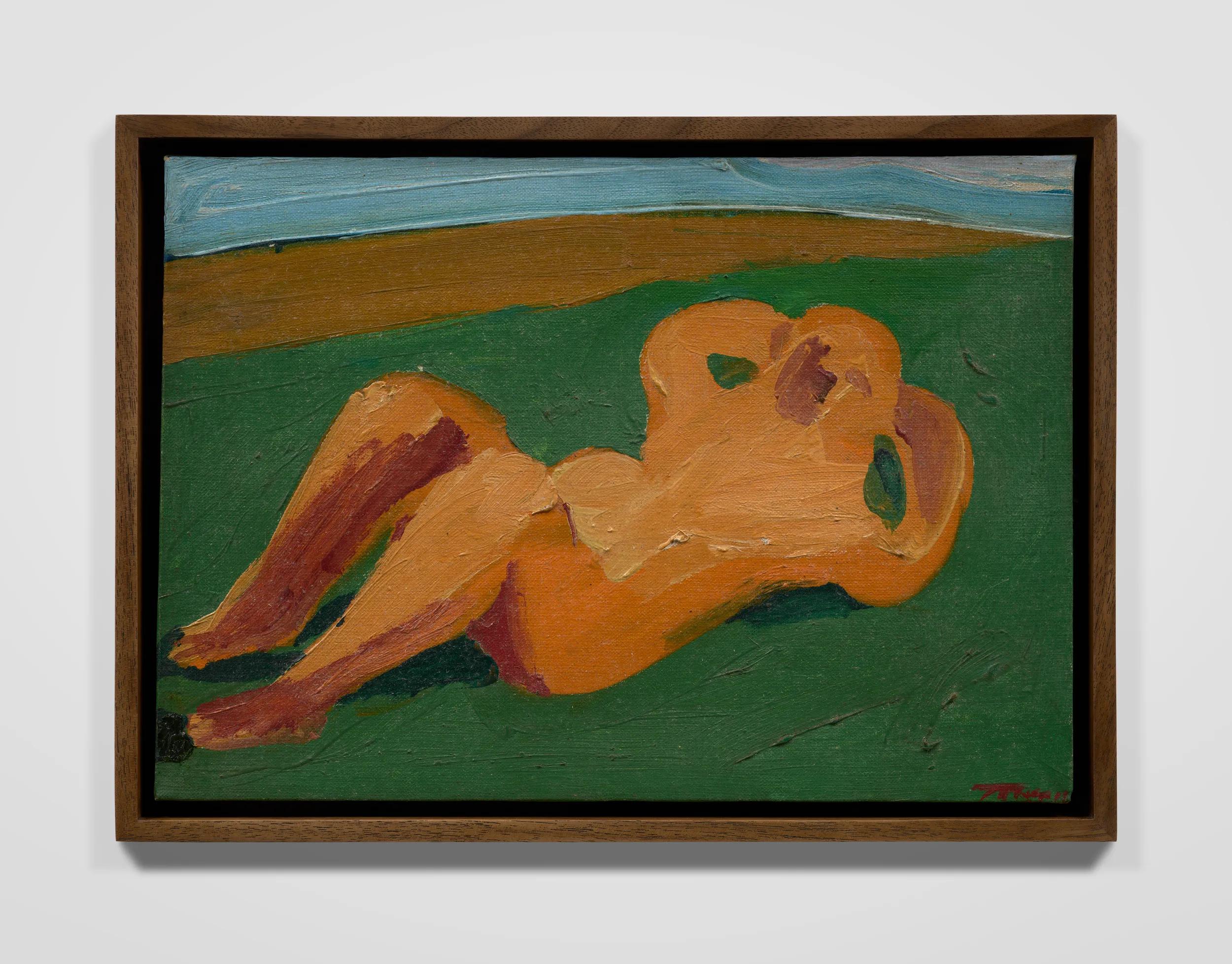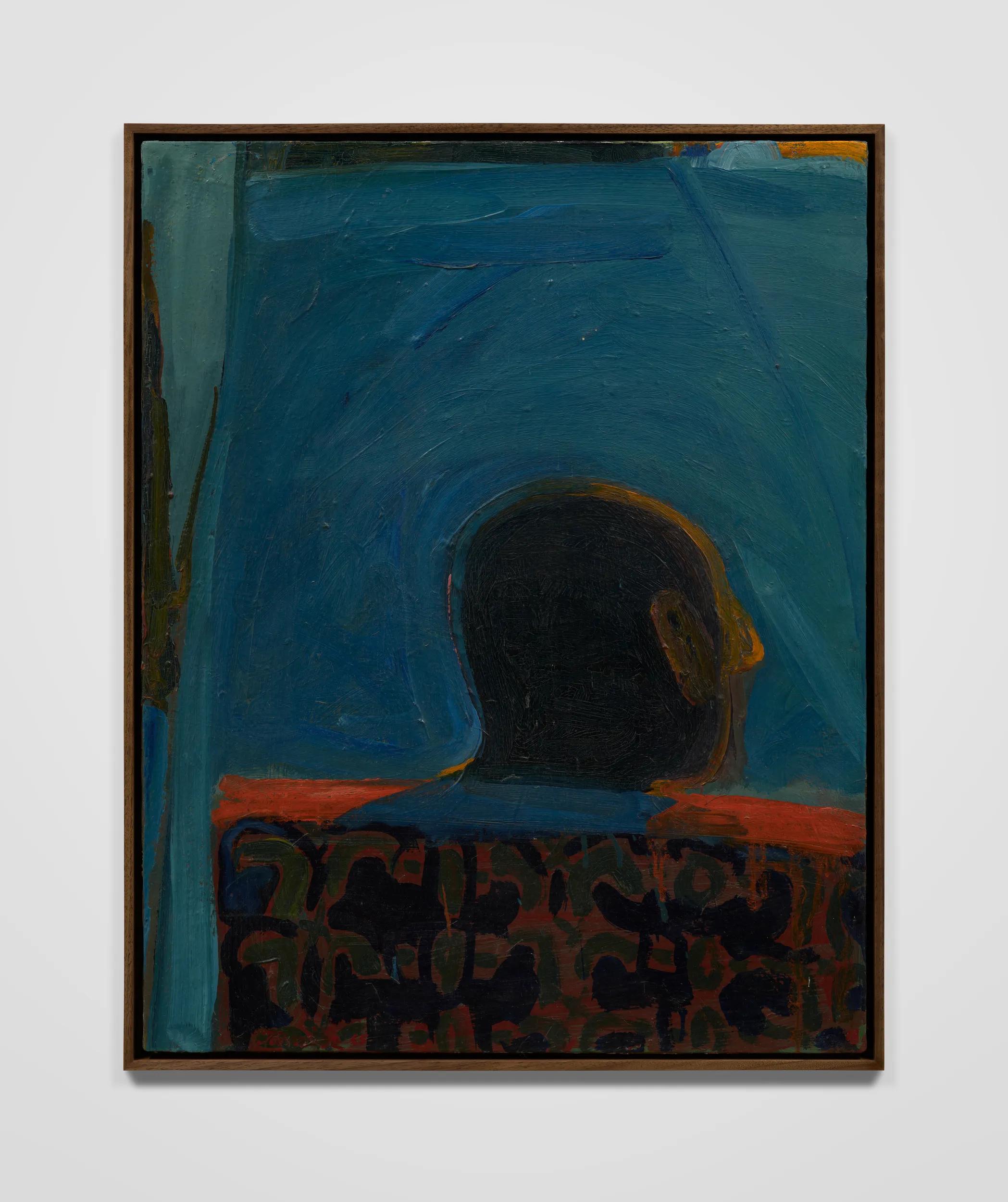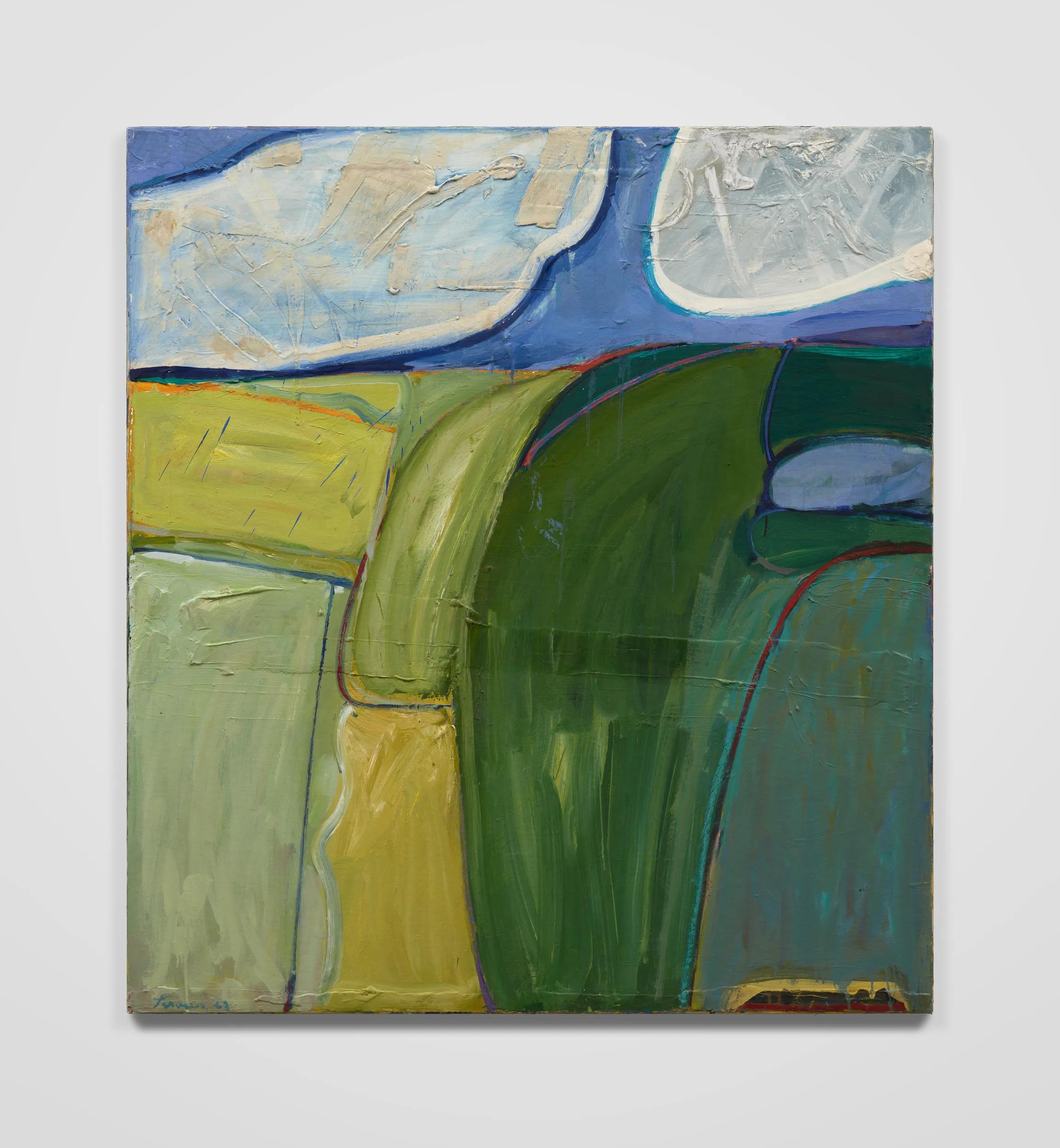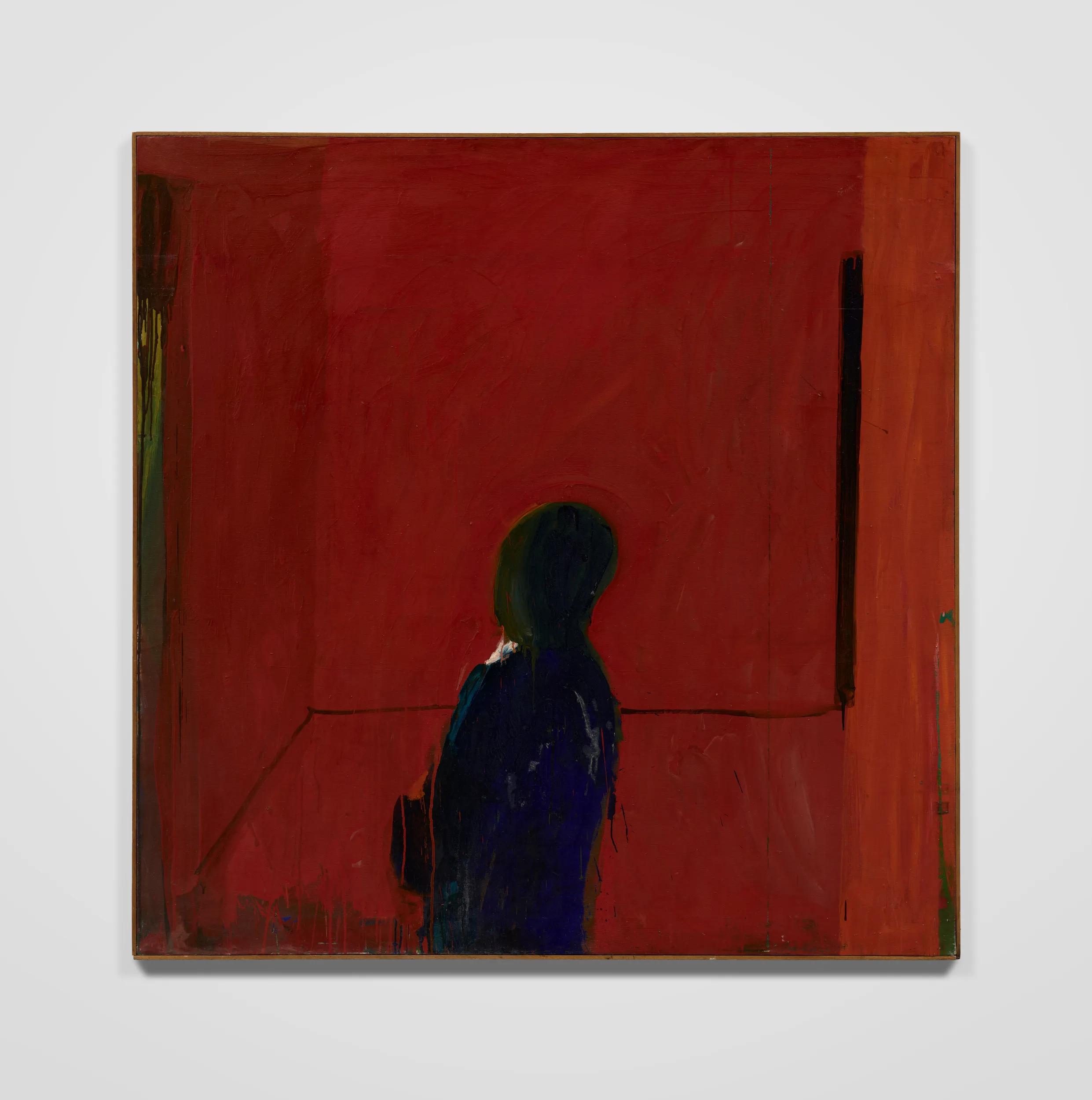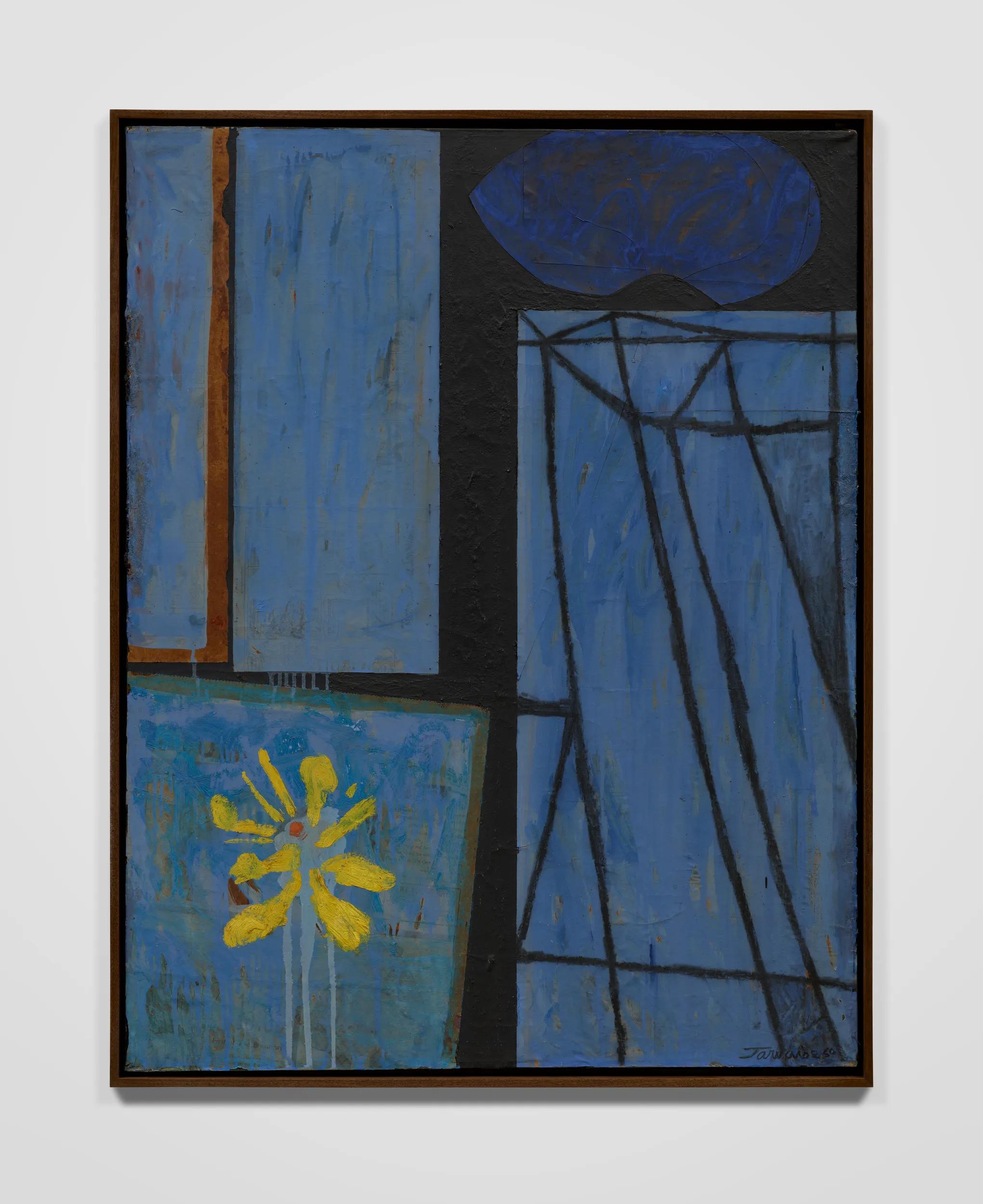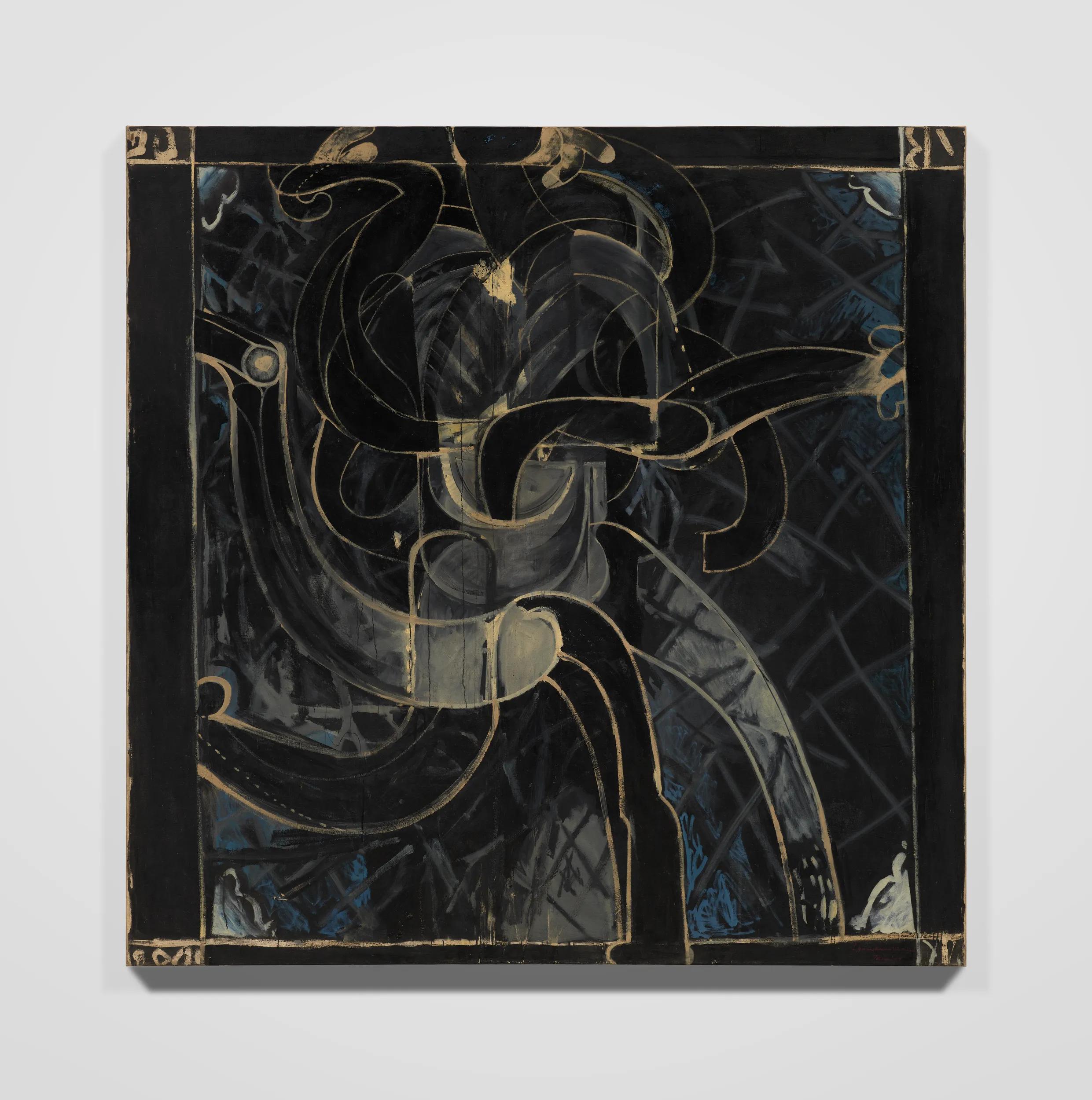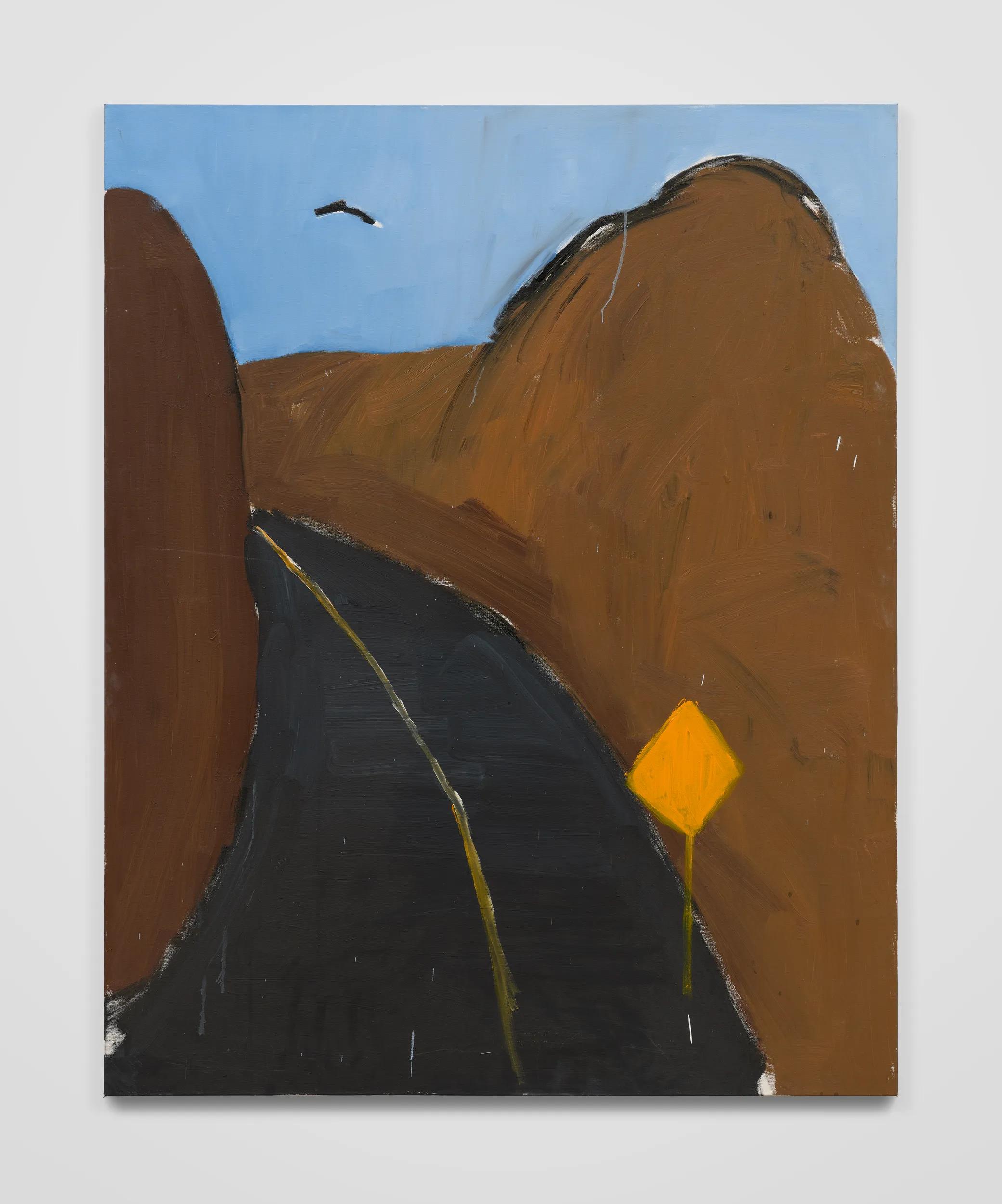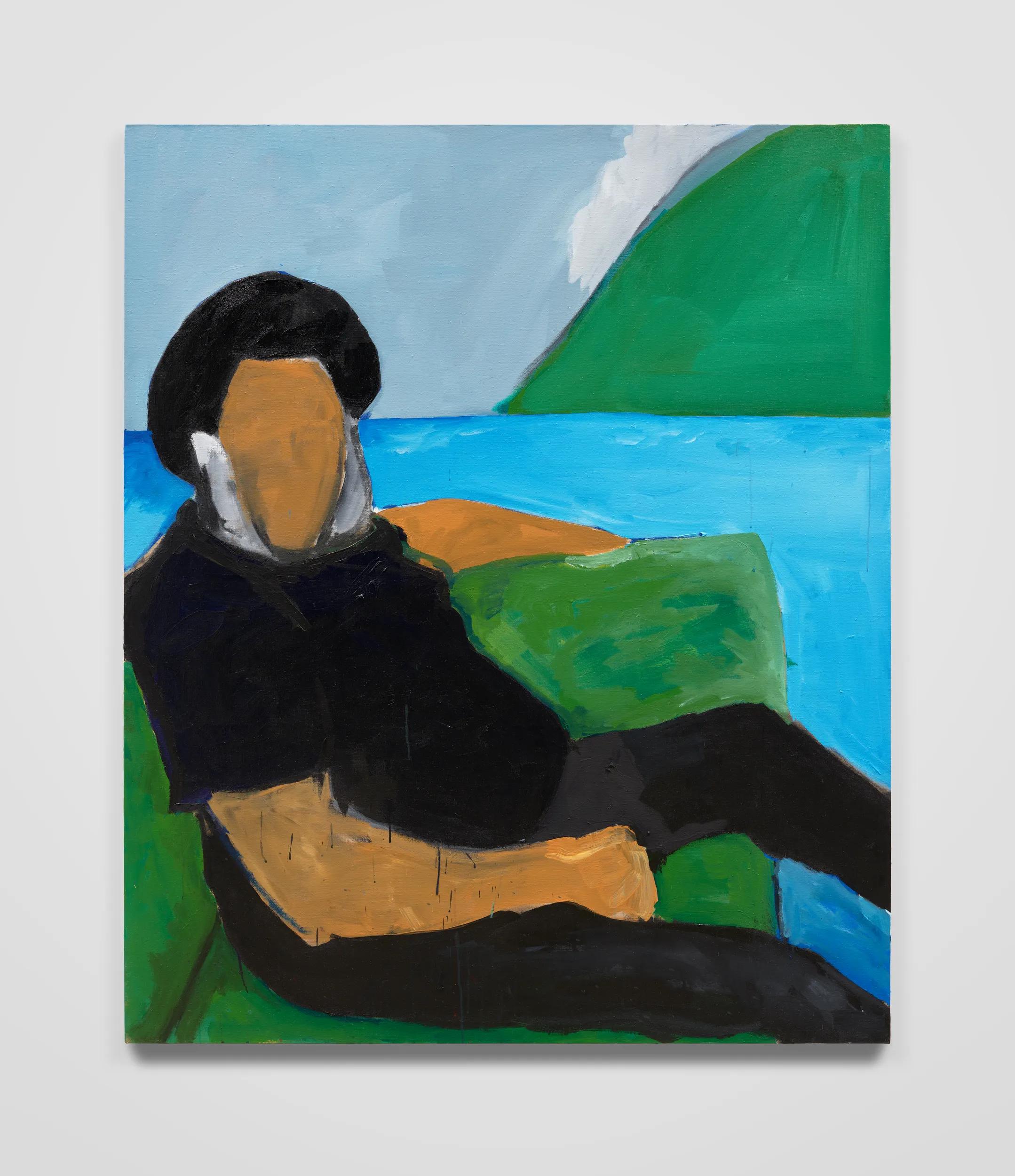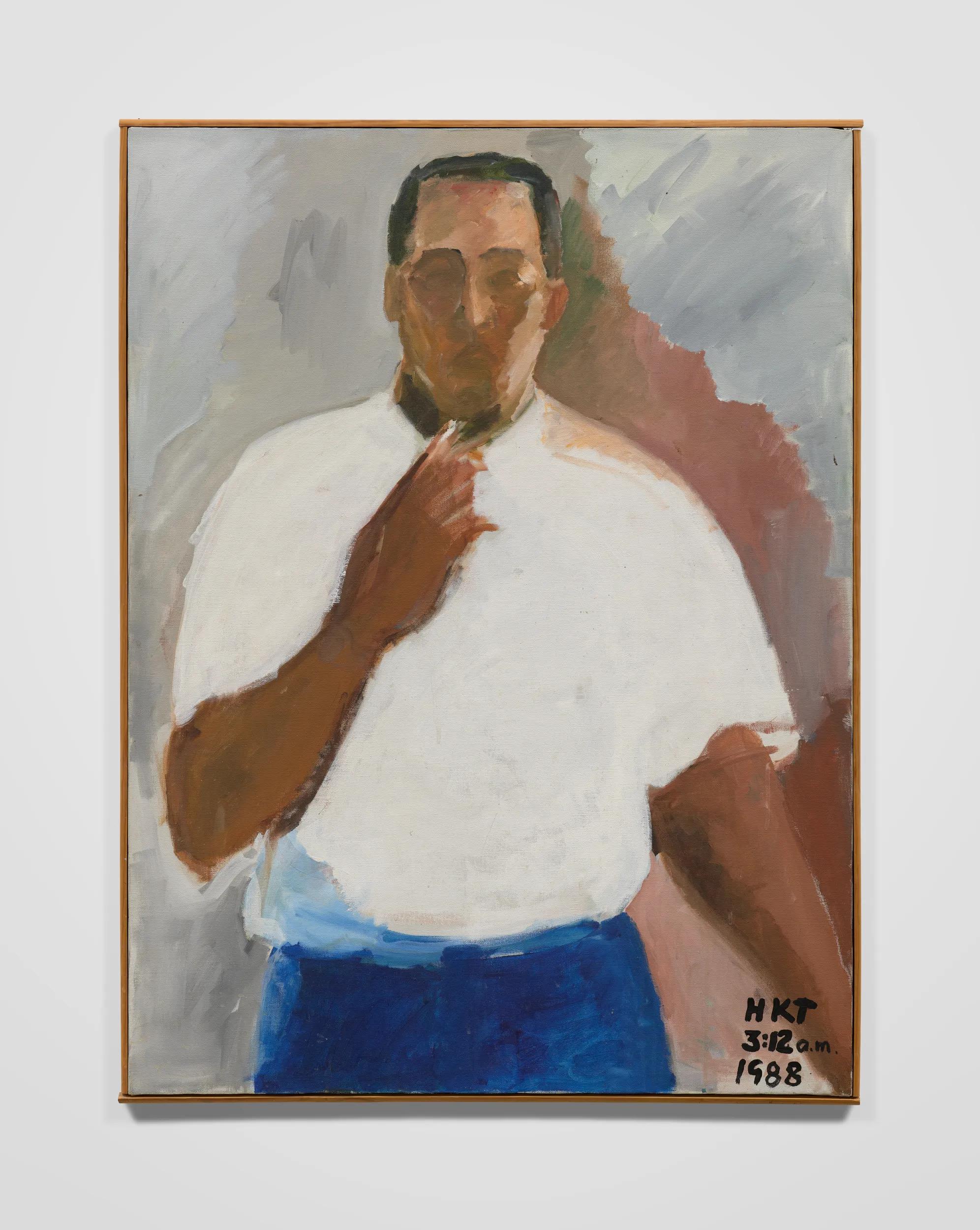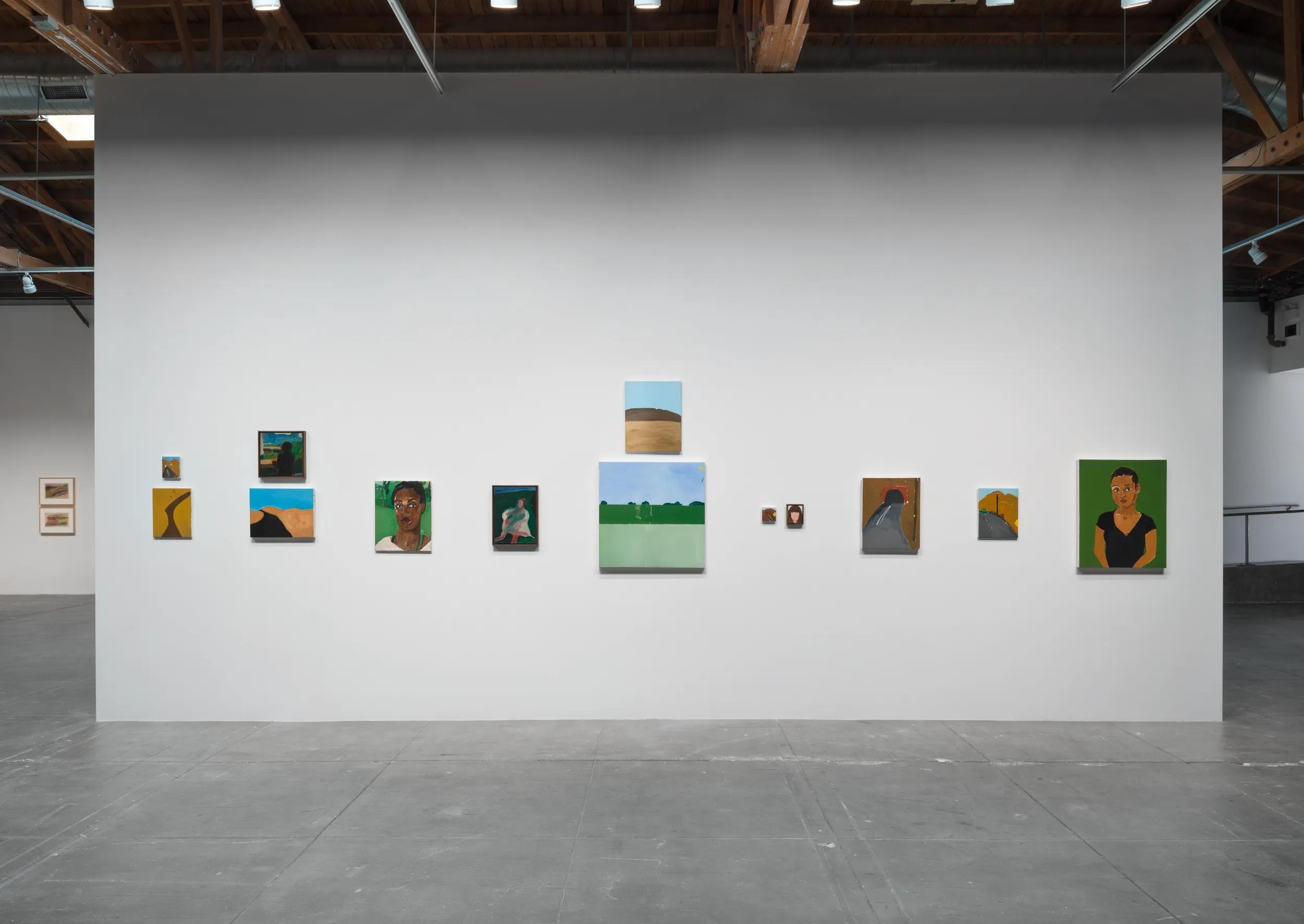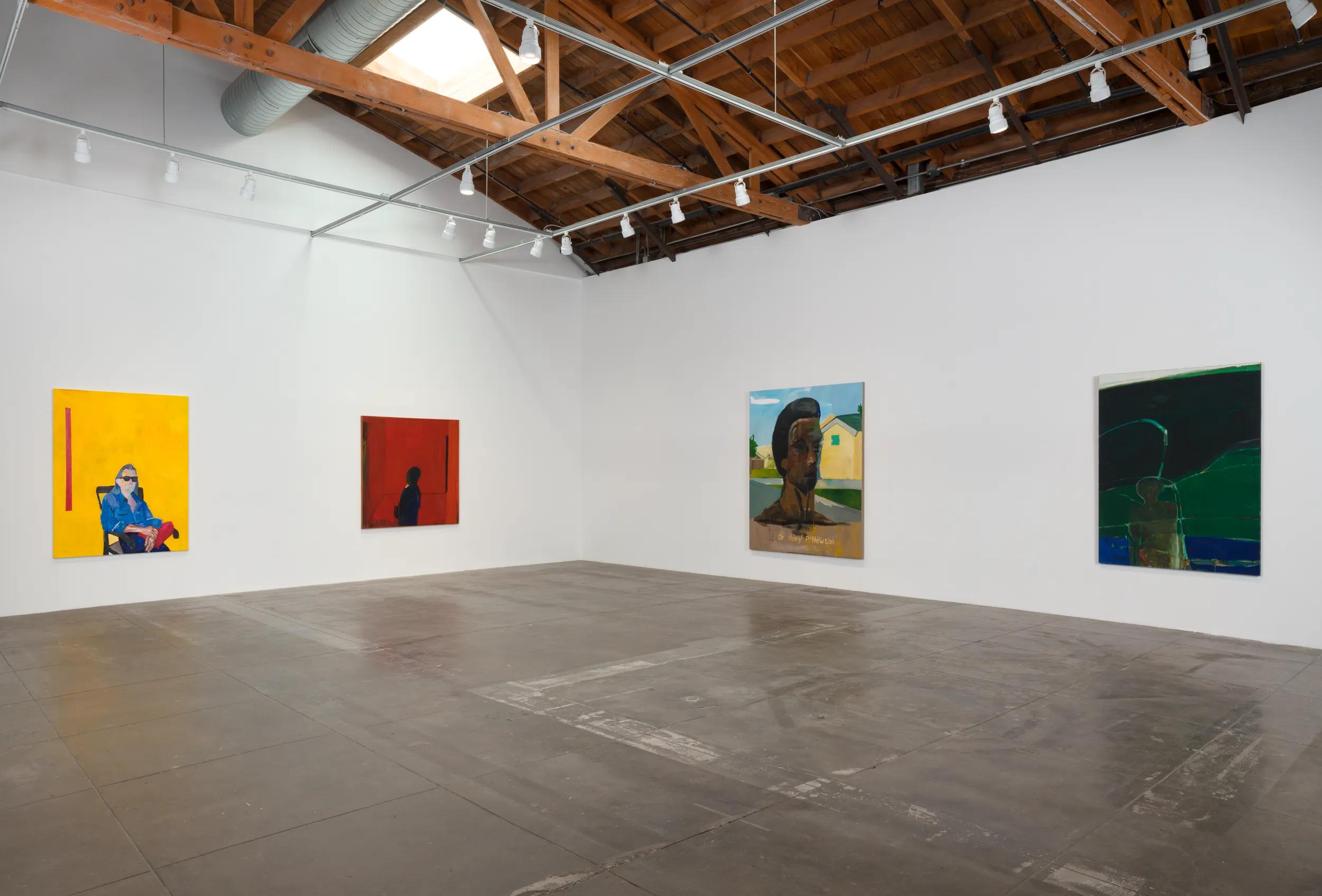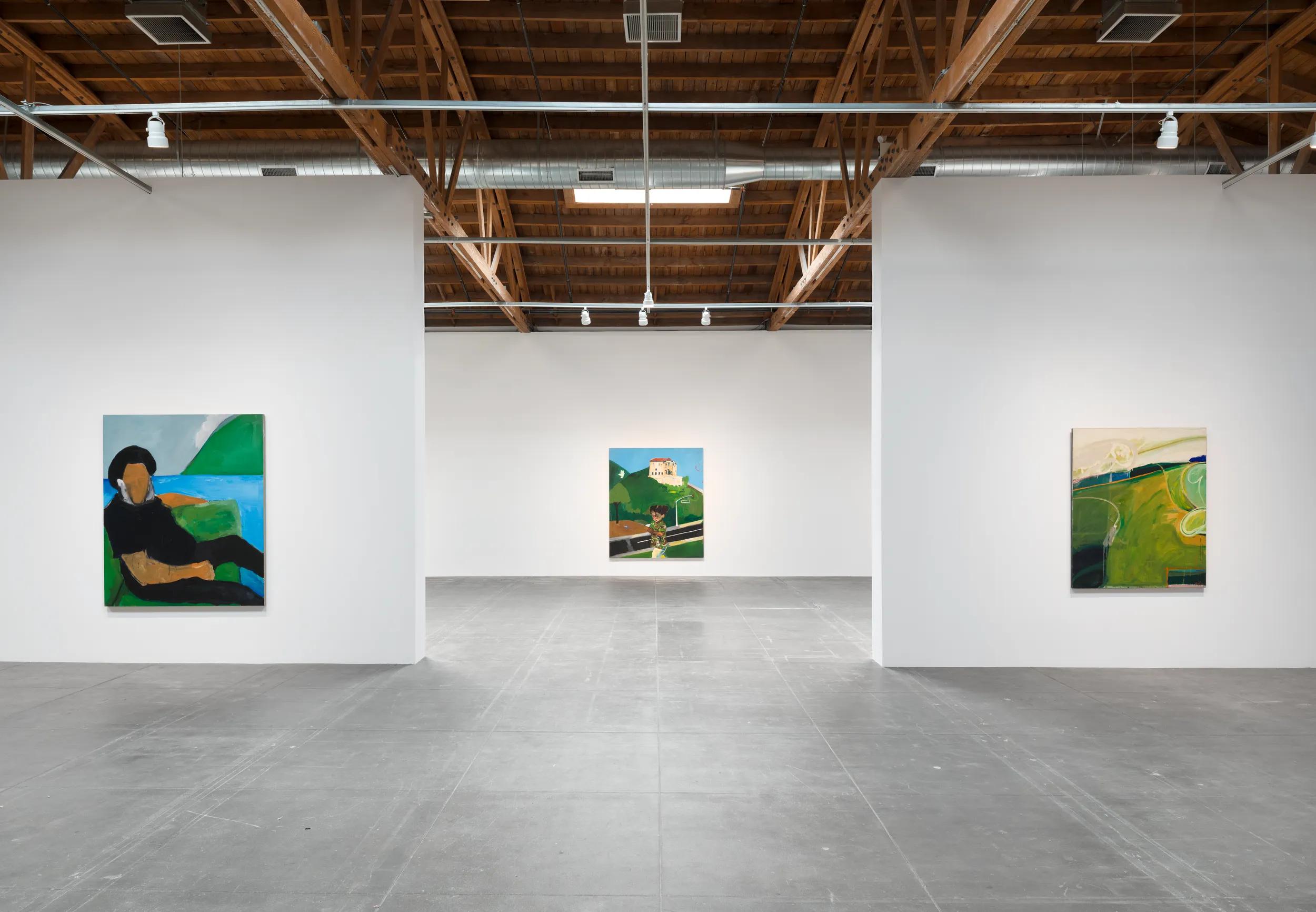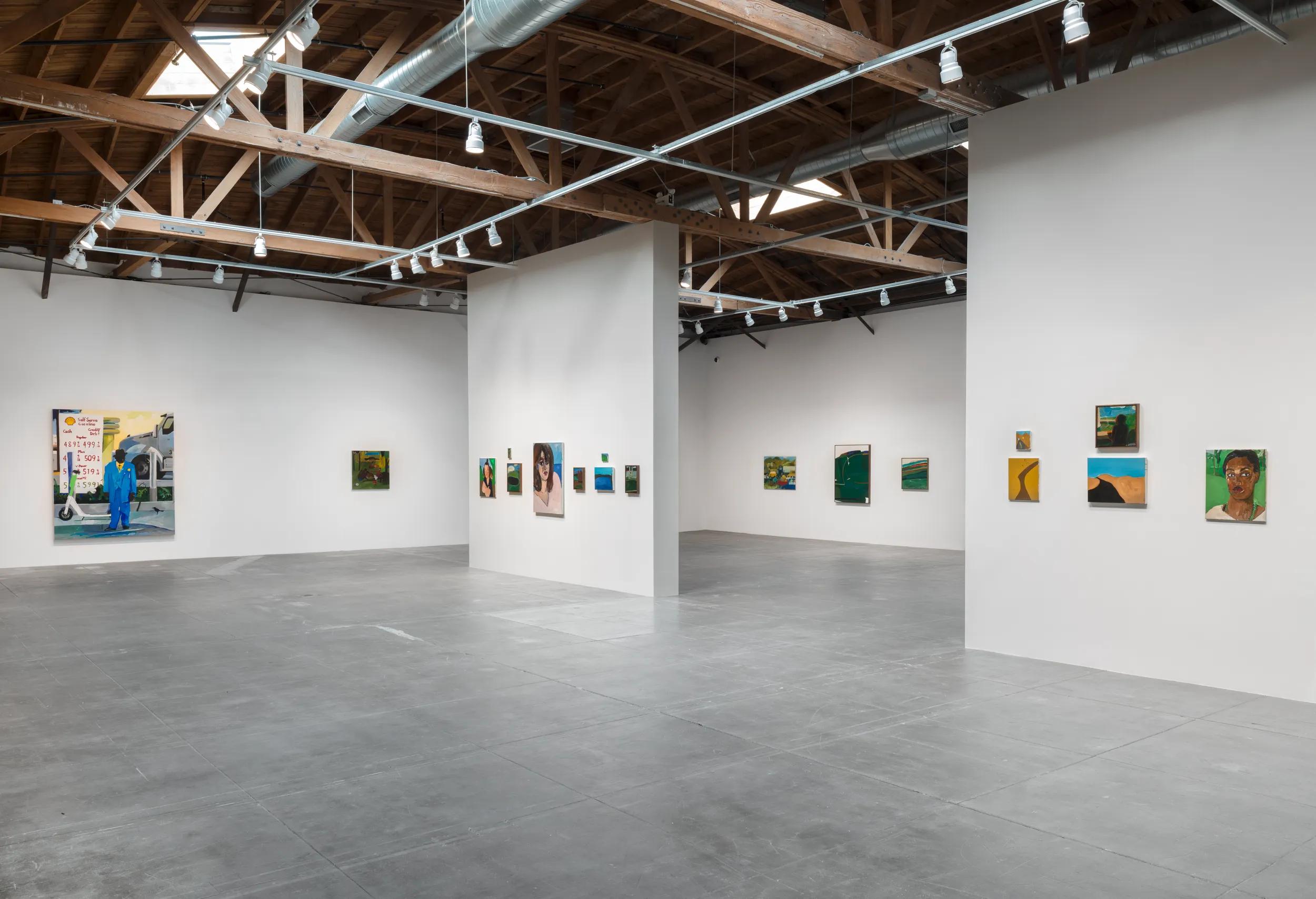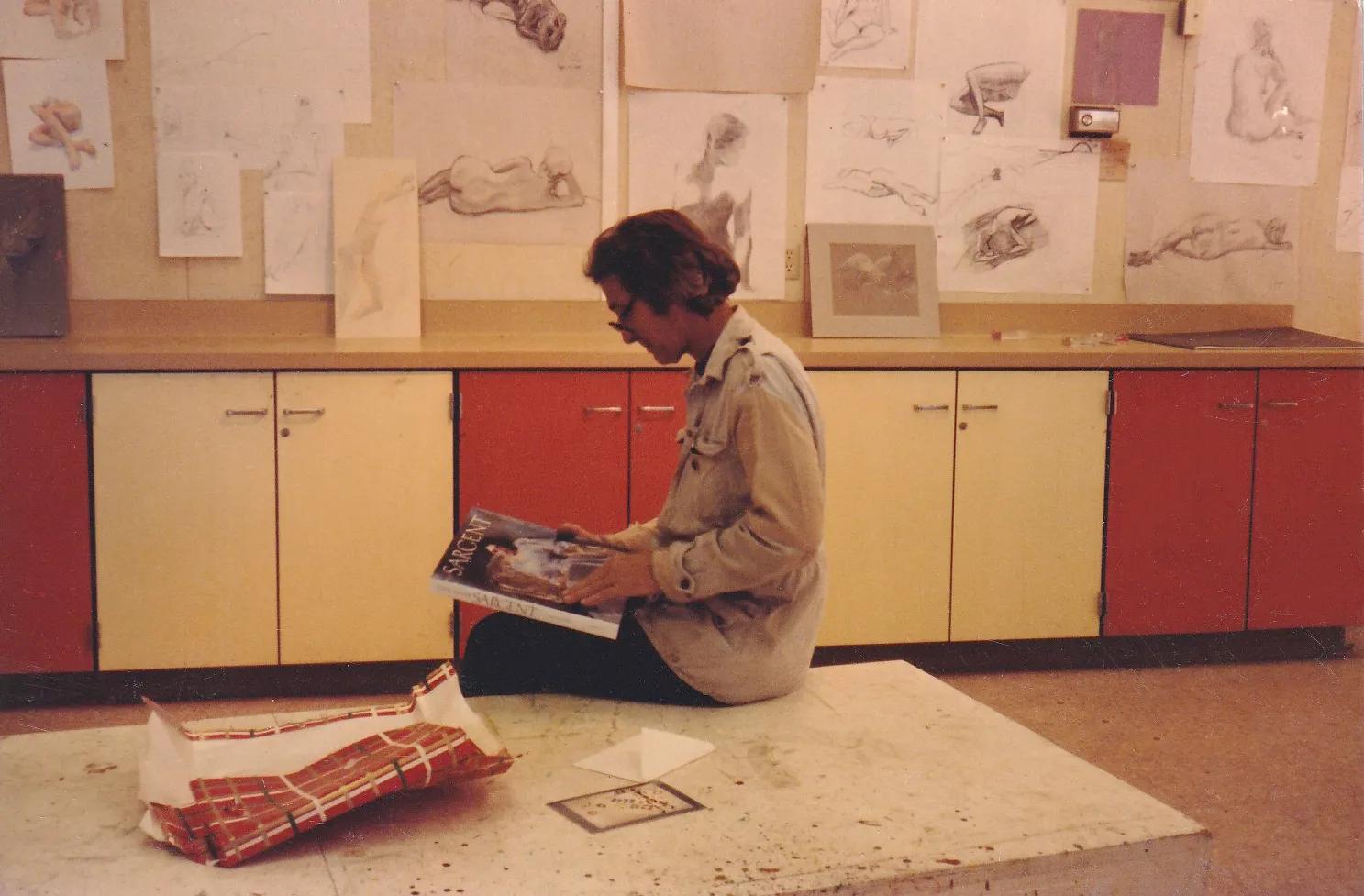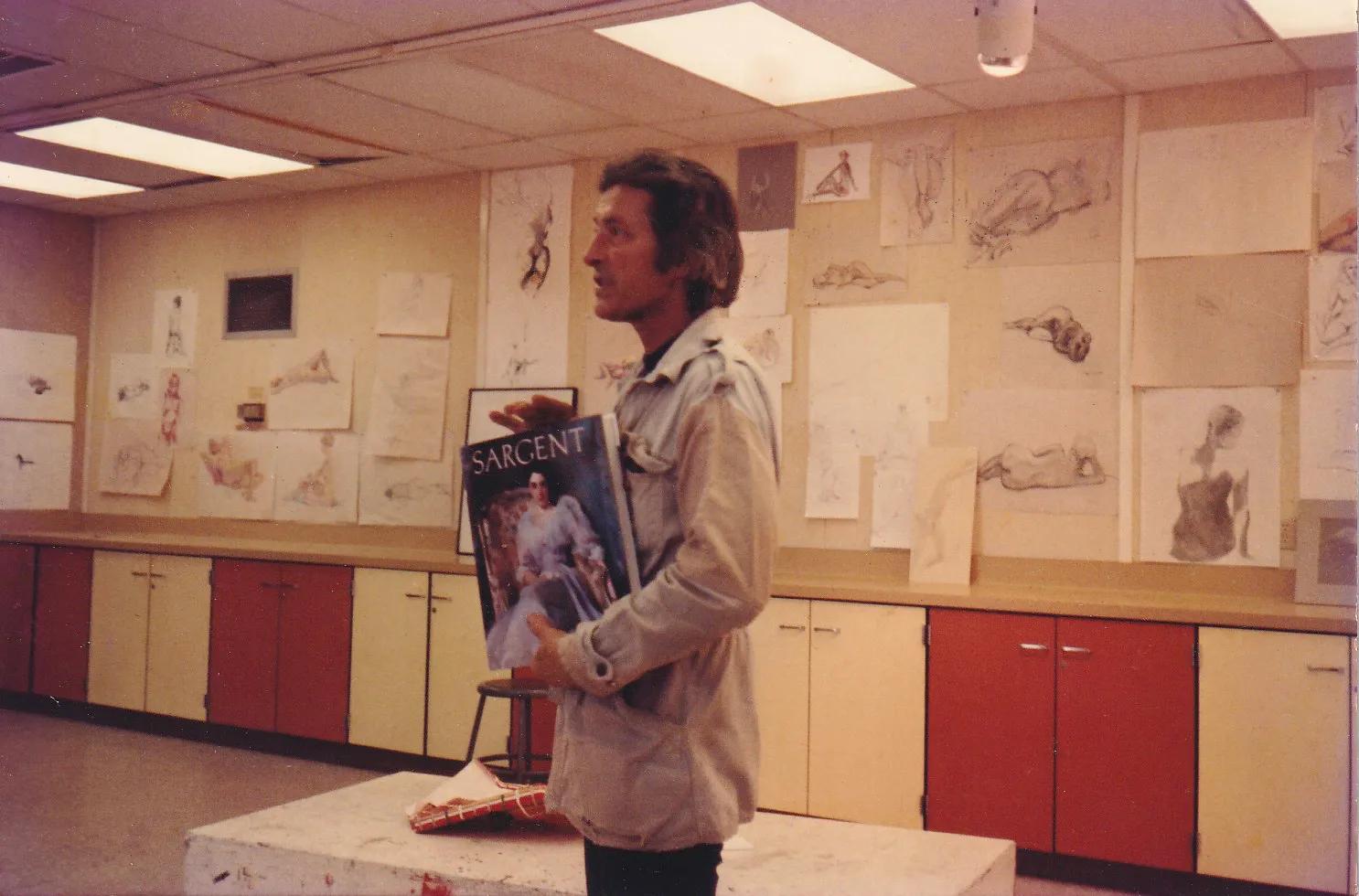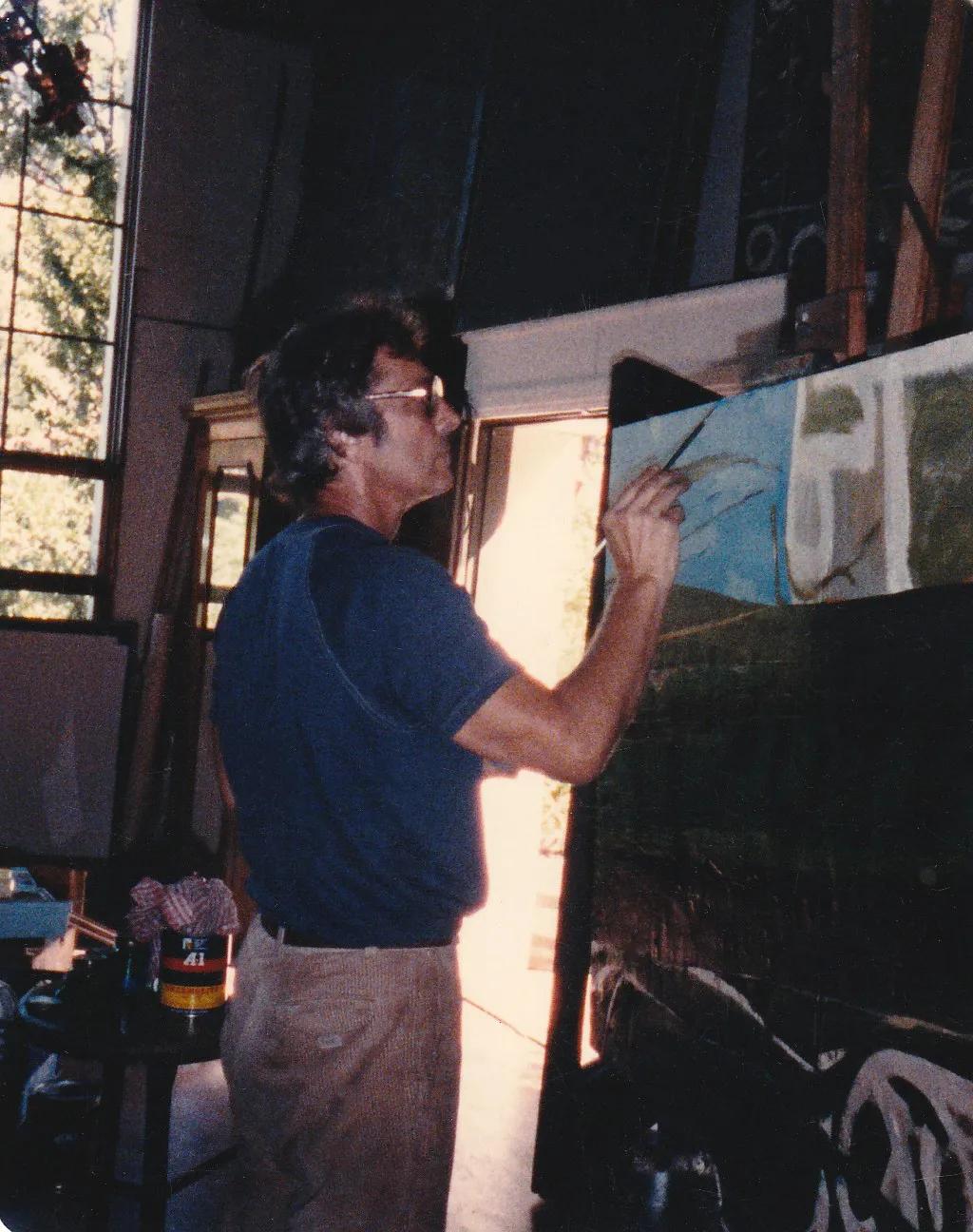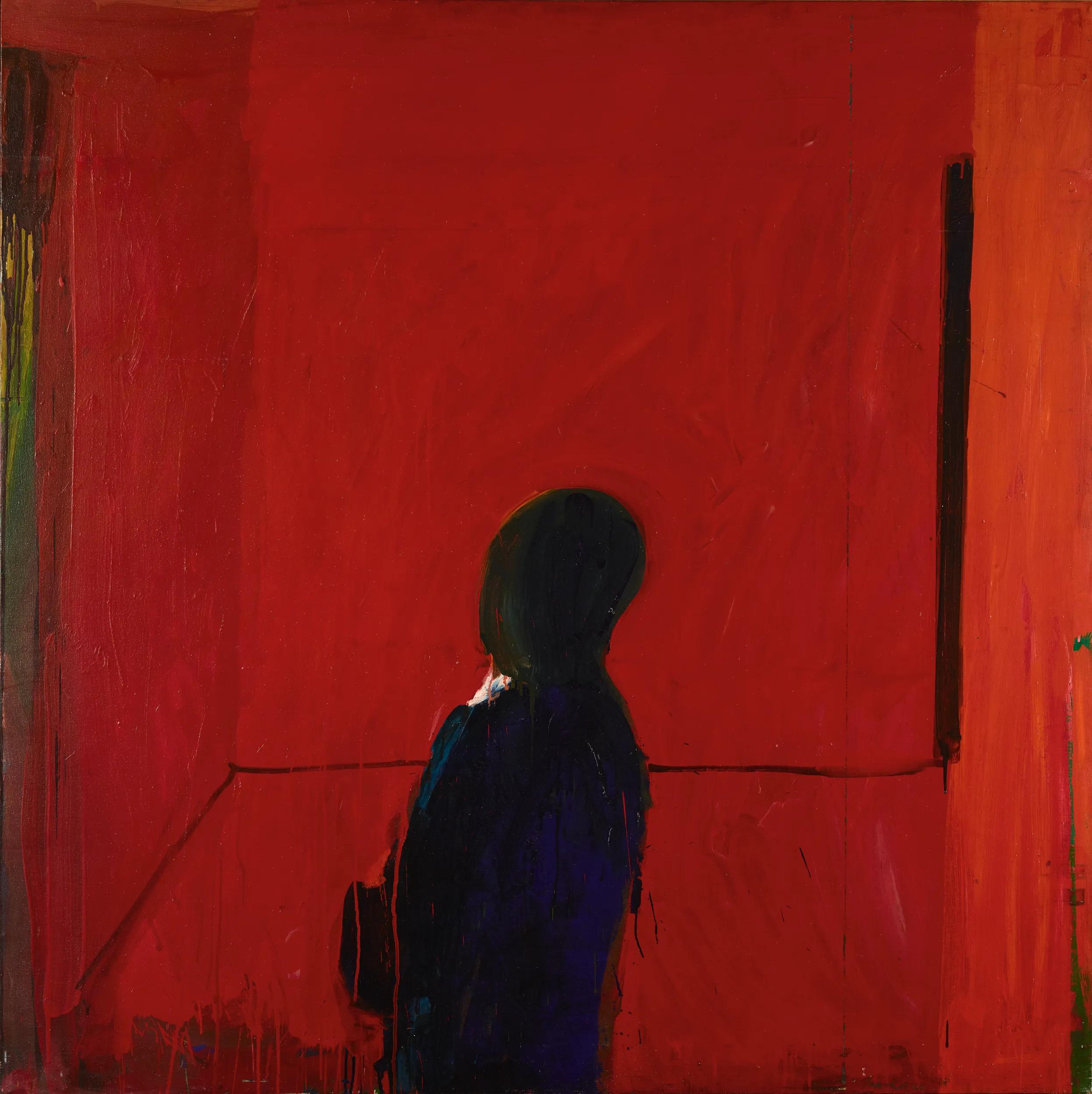
James Jarvaise & Henry Taylor
Sometimes a straight line has to be crooked
29 June – 5 October 2025
Downtown Los Angeles
‘Sometimes a straight line has to be crooked’ is the first exhibition to put the work of Henry Taylor, one of today’s most celebrated painters, in dialogue with that of his teacher, California modernist James Jarvaise (1924 – 2015). Taylor will explore an idea he has long carried: to pay homage to Jarvaise—an artist who saw something special in him as a student in the 1980s—through an exhibition.
Composed along loosely thematic lines and consisting largely of paintings, this major installation will span the 1950s to the present, with new works created especially for the show by Taylor, whose interest in landscape, alongside the figure, will be freshly explored. The first exhibition of Taylor’s work to take place at Hauser & Wirth in Los Angeles, the title is taken from advice Jarvaise imparted to his student: the words of a vital teacher who offered Taylor many lessons on how to build a painting with integrity.
Seen together for the first time, the exhibition will feature over seven decades of work by the two artists. On view will be paintings and related drawings from Jarvaise’s historic Hudson River School series, which was included in the 1959 exhibition ‘Sixteen Americans’ at The Museum of Modern Art, New York, alongside that of Jay DeFeo, Jasper Johns, Robert Rauschenberg, Frank Stella and other emerging artists of the time. These works will be presented along with modernist collages from the 1950s, figurative paintings from the 1960s, and large-scale paintings on burlap from the 1970s that were specifically chosen by Taylor. The installation will also encapsulate three decades of Taylor’s work with over 40 paintings to concentrate on portraits of friends, family and strangers, figure studies, neighborhood scenes and landscapes. New works on view will include a group of tree sculptures— each trunk sporting an arboreal afro of artificial hair—that Taylor, who plays as hard with language as he does the brush, refers to as his ‘For-Us’ forest.
Henry Taylor credits James Jarvaise with having been the first to recognize his talents in the early 1980s. At the time, Taylor was supporting himself as a psychiatric technician at the Camarillo State Mental Hospital while pursuing a range of interests, including classes in journalism, cultural anthropology and set design at Oxnard College. There, he repeatedly enrolled in Jarvaise’s painting class, where he was introduced to the works of Max Beckmann, Jean Dubuffet, Philip Guston, Cy Twombly and other modernists who were entirely new to him. At the same time, Jarvaise recognized something urgent and distinctive in Taylor, and insisted the student take himself seriously as an artist. Taylor accordingly enrolled at CalArts but continued to bring his work to Jarvaise for valued critiques. Taylor describes packing up his car with paintings and waiting in the college parking lot to show Jarvaise his latest explorations, relying on his critique to resolve and push a painting to completeness.
When exhibited together, the works of Jarvaise and Taylor appear to be in clear dialogue with one another. Notwithstanding the obvious differences in their approach to content and historical contexts, Taylor’s vivid portrait of Jarvaise and Jarvaise’s archetypal ‘Man in the Room’ (1963) have a strikingly similar resonance and shared sensibility. ‘Sometimes a straight line has to be crooked’ connects Jarvaise and Taylor formally—works on view spotlight the two artists’ approaches to massing flat shapes that move between figuration and abstraction, and their talent for deploying off-beat colors, strong tones, straight horizons and curvaceous lines—and unites them energetically across time.
Installation Views
1 / 4
About James Jarvaise
A California regionalist who taught generations of students at schools in and around Los Angeles, James Jarvaise gained national acclaim when his work was included in the historic 1959 exhibition ‘Sixteen Americans’ at The Museum of Modern Art, New York. Writing for The New Yorker, critic Robert Coates commended ‘the coolly green, strongly linear group of abstract oils called ‘Hudson River Series,’ all with landscape motifs, by James Jarvaise.’ Over subsequent years, Jarvaise exhibited regularly at the Felix Landau gallery in Los Angeles and elsewhere before turning his focus to home: after moving his family to Santa Barbara in 1969, Jarvaise dedicated his time to crafting an artist’s paradise where he continued to work in peaceful privacy. In 2012, a survey of his work at Louis Stern gallery in Los Angeles was accompanied by a monograph.
Over the course of his teaching career, Jarvaise was affiliated with USC, California Institute of the Arts (formerly Chouinard Arts Institute), Occidental College, Santa Barbara Art Institute and Oxnard College, where he retired in 2004. Prominent among generations of his students are Charles Arnoldi, David Novros, Peter Plagens, Henry Taylor and Robert Therrien. His work was collected by museums including the Albright Knox Gallery, Buffalo; Carnegie Museum of Art, Pittsburgh; Los Angeles County Museum of Art; The Museum of Modern Art, New York and the Smithsonian’s Hirshhorn Museum and Sculpture Garden.
Related Content
About the Artist
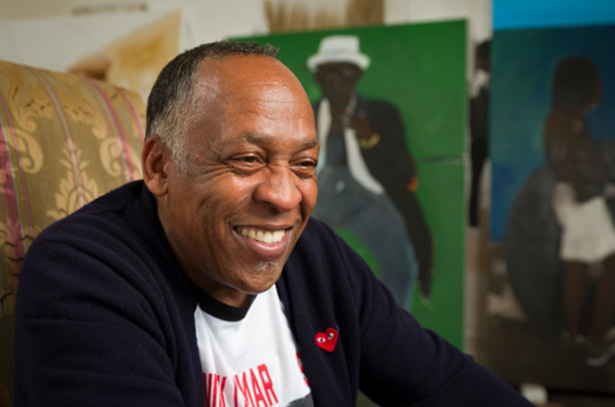
Henry Taylor
Henry Taylor vit et travaille à Los Angeles (Californie). Son oeuvre a récemment été présentée aux États-Unis dans le cadre des expositions collectives ‘I’m yours: Encounters with Art in Our Times’ à l’Institut d’art contemporain (ICA) de Boston et ‘Grief and Grievance: Art and Mourning in America’ au New Museum de New York. En 2022, une rétrospective intitulée ‘Henry Taylor: B Side’, sa plus importante exposition à ce jour, a été présentée au Musée d’art contemporain de Los Angeles et ira au Whitney Museum of American Art de New York du 4 octobre 2023 au 28 janvier 2024. Outre les Etats-Unis, ses oeuvres ont fait l’objet de nombreuses expositions internationales.
Elles ont rejoint d’importantes collections comme celles de la Bourse de Commerce – Pinault Collection, à Paris (France), The Bronx Museum of the Arts (New York), le Carnegie Museum of Art de Pittsburgh, la Fondation Louis Vuitton à Paris (France), le Hammer Museum de Los Angeles (Californie), l’Institut d’art contemporain de Boston (Massachussetts), le Los Angeles County Museum of Art, Le Metropolitan Museum of Art de New York, le Musée d’art contemporain de Los Angeles, le Musée des beaux-arts de Houston (Texas), le Musée d’art moderne de New York, le Nasher Museum of Art de la Duke University de Durham (Caroline du Nord), le Pérez Art Museum de Miami (Floride), le Musée d’art moderne de San Francisco (Californie), le Studio Museum de Harlem (New York), et le Whitney Museum of American Art de New York. En 2018, Henry Taylor a reçu le prix Robert De Niro, Sr. pour ses réalisations picturales. Le travail d’Henry Taylor a été présenté à la Whitney Biennial 2017 (Whitney Museum of American Art, New York) et à la 58ème Biennale de Venise en 2019.
Current Exhibitions
1 / 9
